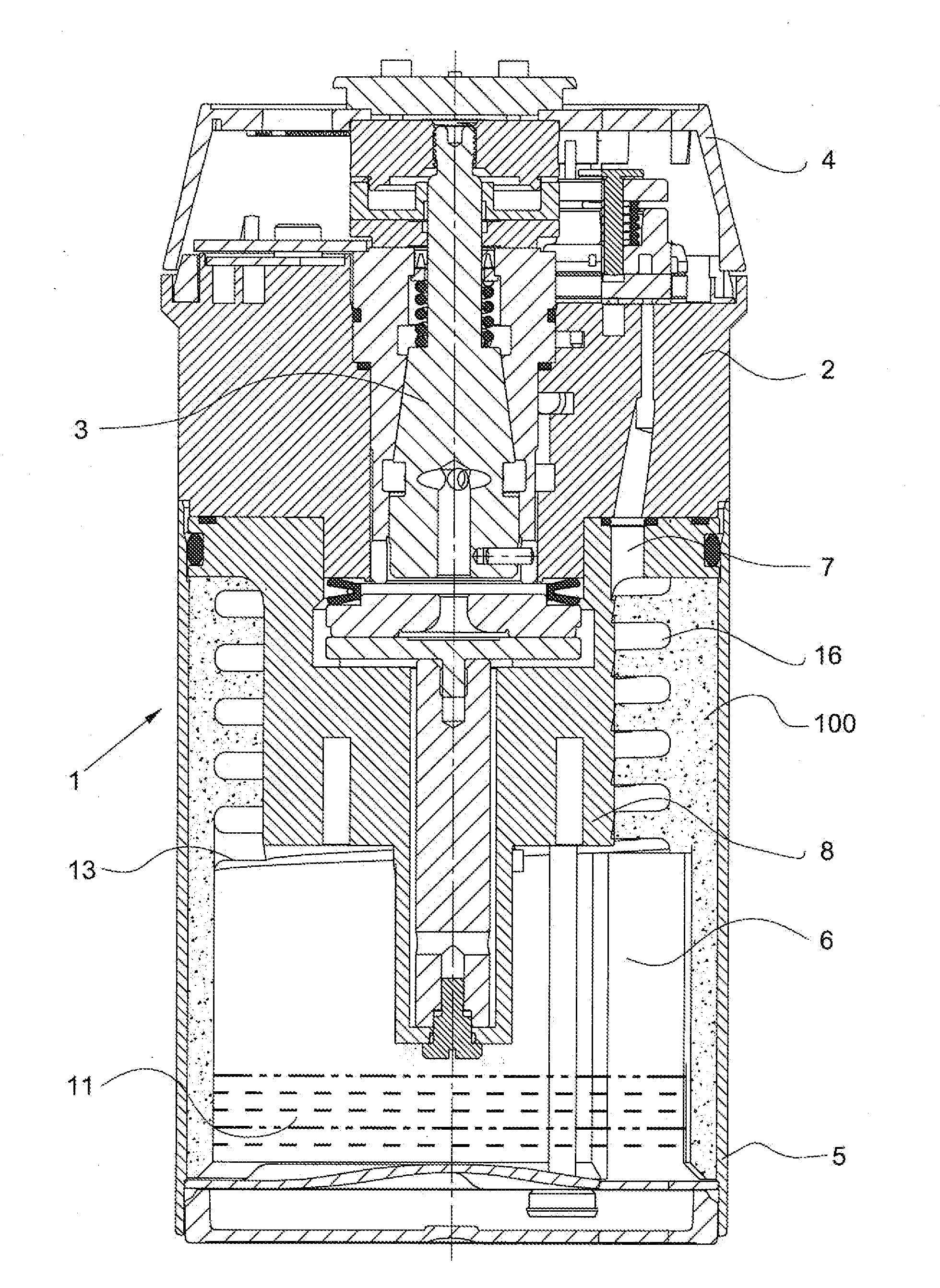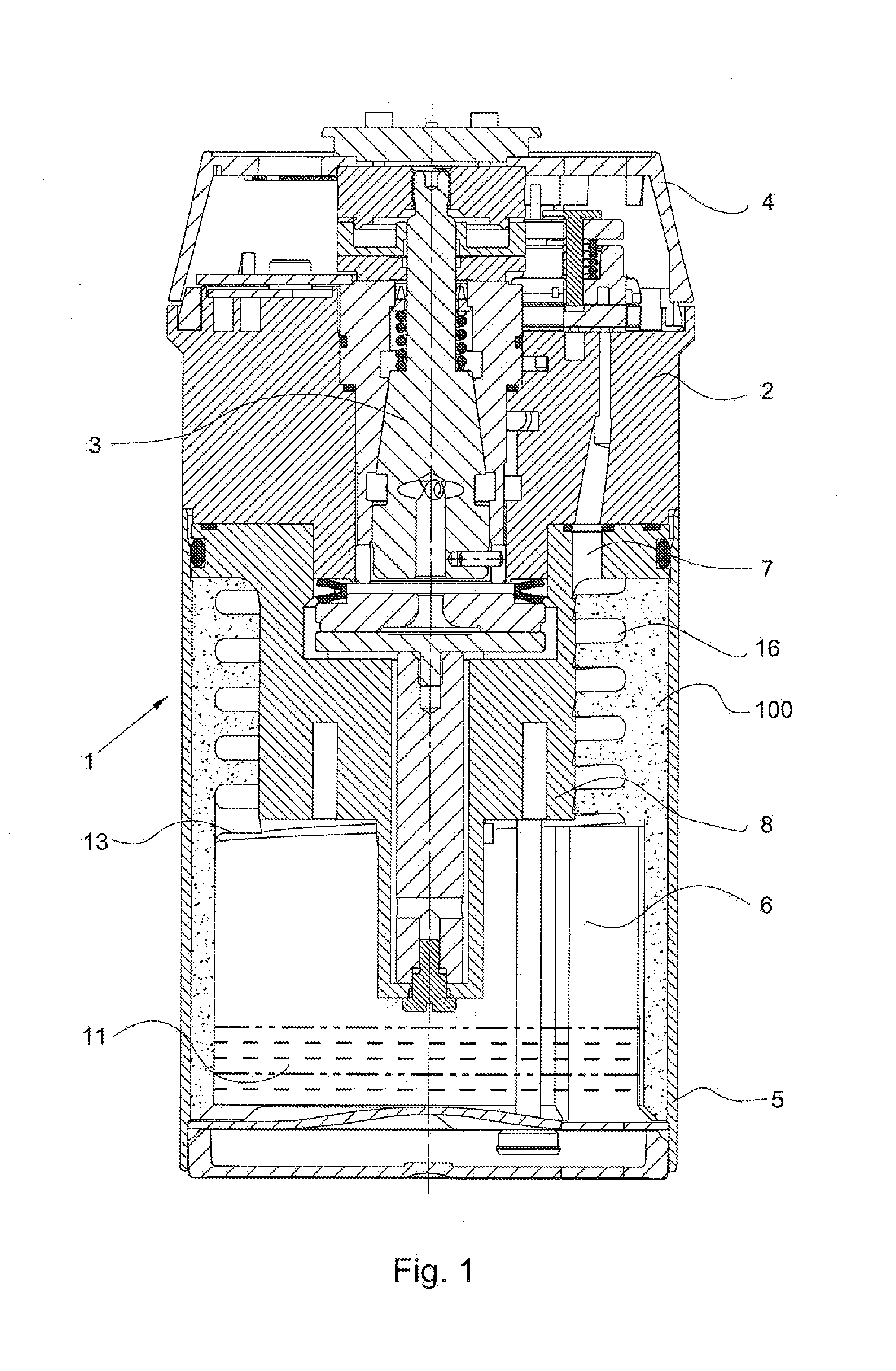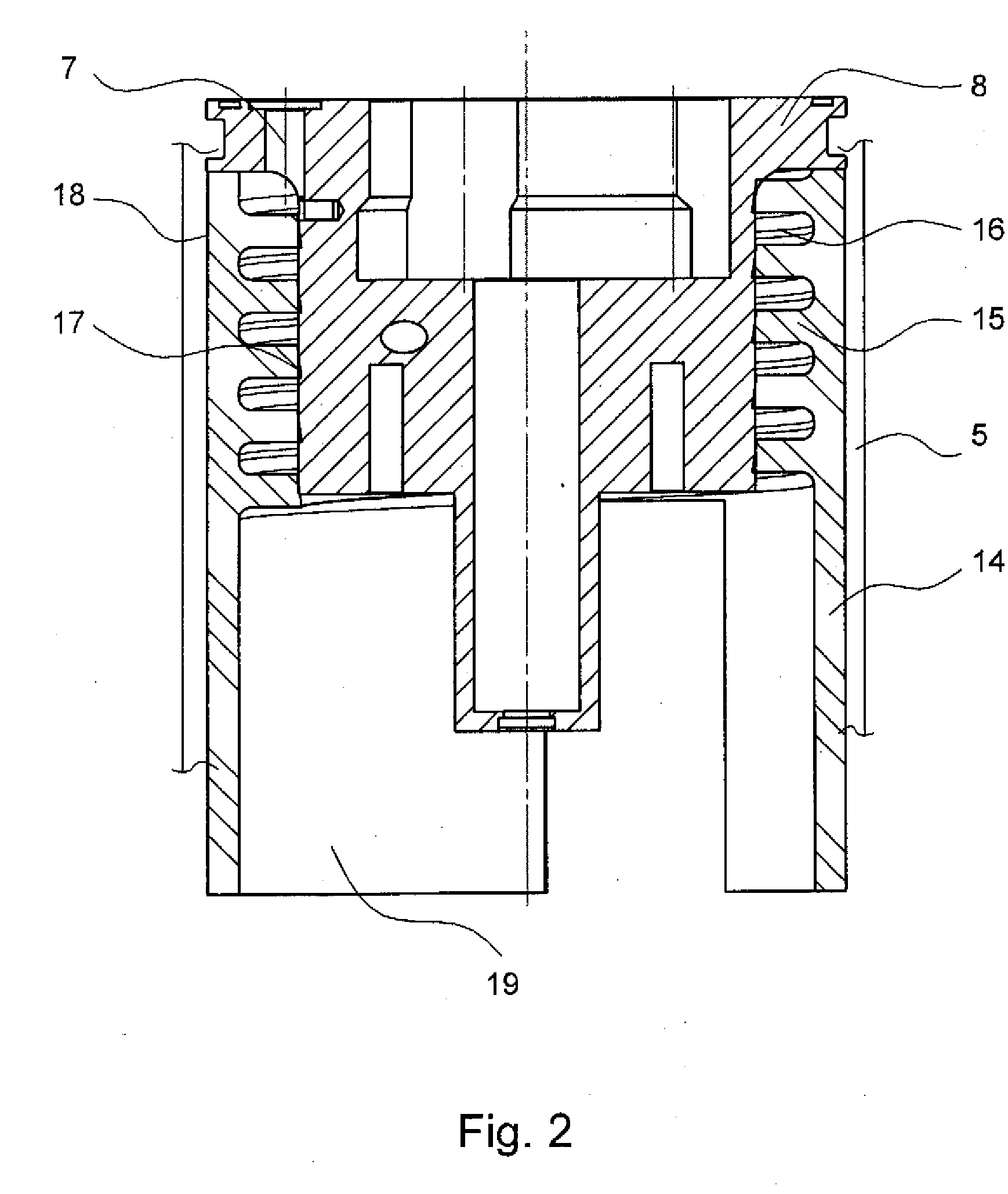Wick for an anesthetic evaporator
a technology of anesthetic evaporators and wicks, which is applied in the direction of respirators, inhalators, etc., can solve the problems that the wick tube and the anesthetic evaporator can be manufactured at a high cost and require a rather substantial manufacturing effort, so as to improve the utilization of space, reduce flow resistance, and smooth the surface
- Summary
- Abstract
- Description
- Claims
- Application Information
AI Technical Summary
Benefits of technology
Problems solved by technology
Method used
Image
Examples
Embodiment Construction
[0020]Referring to the drawings in particular, FIG. 1 schematically shows an anesthetic evaporator according to the invention. An evaporator pot 5 defines an evaporator chamber 6, The evaporator pot 5 is located under an evaporator upper part 2 with a dispensing cone 3 for dispensing breathing gas saturated with anesthetic vapor and with a setting wheel 4 connected to the dispensing cone 3. The invention provides an anesthetic evaporator wick structure 100 comprised of a cylindrical wick body (14, 21) and helically extending cavity 16 (shown schematically as a vertically extending box in FIG. 1) described below. The dimensionally stable wick body 14, 21 is porous and transports anesthetic by means of capillary force. The evaporator wick structure 100, namely the cylindrical wick body 14, 21 is designed in terms of its principal geometry as a hollow cylinder.
[0021]The anesthetic evaporator wick structure 100 is provided radially outwardly of a compensator 8 and extends into the evapo...
PUM
 Login to View More
Login to View More Abstract
Description
Claims
Application Information
 Login to View More
Login to View More - R&D
- Intellectual Property
- Life Sciences
- Materials
- Tech Scout
- Unparalleled Data Quality
- Higher Quality Content
- 60% Fewer Hallucinations
Browse by: Latest US Patents, China's latest patents, Technical Efficacy Thesaurus, Application Domain, Technology Topic, Popular Technical Reports.
© 2025 PatSnap. All rights reserved.Legal|Privacy policy|Modern Slavery Act Transparency Statement|Sitemap|About US| Contact US: help@patsnap.com



